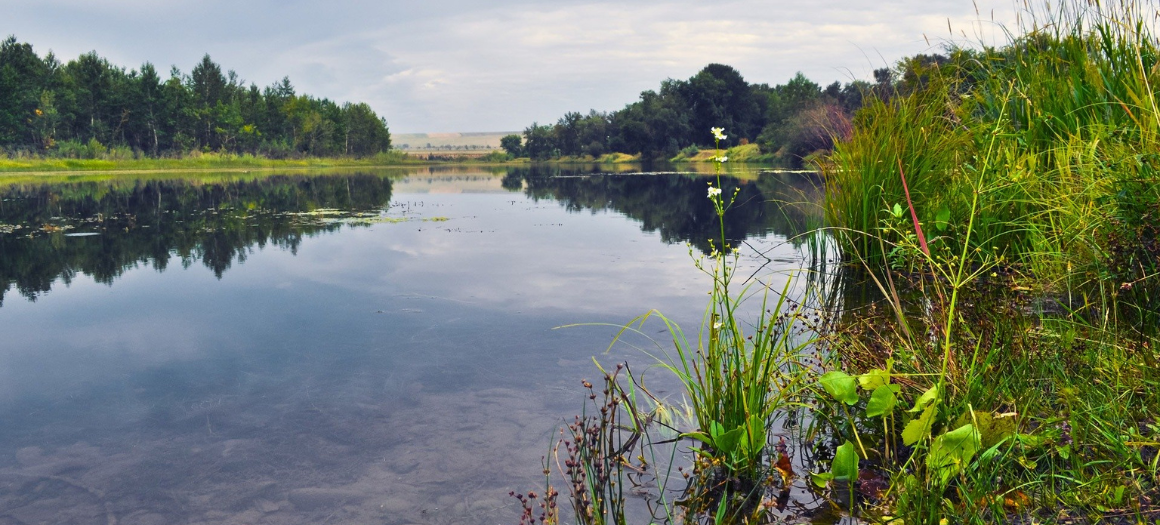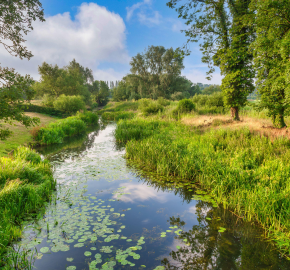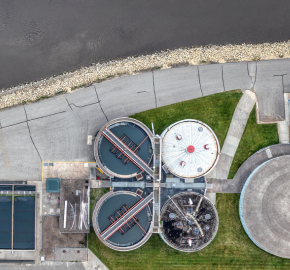The Planning and Infrastructure Bill: a huge threat to nature and our wild fish

WildFish believes that the Planning and Infrastructure Bill – now at the Committee stage in the Commons – threatens the modern consensus on nature conservation in England and Wales. [1]
Some voices (mainly from within the Government itself, some larger developers, property law firms and, strangely, a handful of environmental organisations) have welcomed the Government’s excessively-hyped “win-win” for developers and the environment in the Planning and Infrastructure Bill, but WildFish and indeed the overwhelming majority of right-thinking conservation and environment groups are horrified by what they read in the Bill.
Let’s get this straight.
The Government might ‘spin’ the Bill as a valid attempt to serve the two masters of economic growth and the environment, but there is no ‘win’ here for nature.
This Bill is about striking through all the safeguards we have for habitat and species protection, in the name of growth.
The Bill in brief
The Bill is an aggressive attack on nature.
It would allow the Secretary of State to go on to publish new laws (secondary legislation) without any serious further Parliamentary scrutiny, to push through infrastructure development – sometimes without the need for “development consent” for those projects deemed to be nationally- significant infrastructure projects (NSIPs) such as major road building or energy development.
The Bill would allow the Government to limit public participation by reducing the time period for some consultations and bring in changes to compulsory purchase laws as well as reducing access to the courts for NSIP judicial review appeals. In short, the Bill will shove the so-called ‘blockers’ out of the way of the bulldozers.
However, by far the most controversial part of the Bill is in Part 3.
Part 3 does some things which we believe would dramatically weaken conservation laws that we have painstakingly built over the last four decades.
George Monbiot describes this as nothing less than a “deletion” of conservation law. [2]
In an extraordinary twist, the Bill turns Natural England (NE) into a sort of facilitator for development through its new role in drafting Environmental Delivery Plans (EDP). [3] The EDPs are a sort of euphemism for less conservation and an end to the irreplaceability of some natural places, species and features.
The Bill implies that a chalkstream can be replaced with a few tweaks to a river somewhere else. Ancient oak woodland can simply be replanted in another part of the country. A wetland could be re-created by diggers on a floodplain somewhere else, conveniently far from the building site.
There is nothing in nature that we could not simply destroy and then recreate somewhere less inconvenient for developers.
The proposal is that NE prepares the EDPs which are then signed off by the Government. The Bill spells out in very basic terms how these EDPs identify environmental features that might be damaged by development and the amount that needs to be paid into a ‘nature restoration fund’ by the developers to compensate for the damage. That money will be spent on projects elsewhere, so we can expect more fields of green plastic tubes in odd places.
The worst of the proposals is that an EDP would list laws that could be “discharged, disapplied or otherwise modified if a developer pays the nature restoration levy in relation to the development”.
In short, developers can pay to disapply conservation law and to destroy inconvenient habitat and species that gets in the way.
The Bill makes the journey from valuable habitat to construction site a very short one, without the usual “mitigation hierarchy” for our most protected sites for nature conservation (those designated under the now assimilated Habitats Directive).
The current legal position, under which safeguards effectively forbid development of the ‘Crown jewel’ sites for nature conservation, will be swept away.
As the Bill puts it, where an environmental feature has been identified in an EDP and it is a protected feature, but where the developers have committed to pay a levy “the environmental impact of the development on the protected feature is to be disregarded for the purposes of Part 6 of the Habitats Regulations 2017”.
Extraordinarily, the EDPs also “need not identify all of the possible environmental impacts on an environmental feature”. But, without an understanding of the ecology of a site (and what will be lost by building on it) how can anyone even try to make the right compensatory calculations as to what we might need to try to recreate elsewhere (if that were even remotely possible)?
Growth and development priority
This is not an environmental statute, but one which makes provision for circumventing well-established nature conservation law.
One would have to search quite hard to see how anything in the Bill might benefit nature other than in terms of somehow magically compensating for its loss.
It is remarkable, therefore, that the Bill is supported by the Ministerial Statement, under section 20 of the Environment Act 2021 that, “in the Minister’s view, the Bill will not have the effect of reducing the level of environmental protection provided for by any existing environmental law”.
We live in a strange world where such statements can be made without shame or meaning by Ministers of the Crown.
Even Donald Trump might have baulked at that whopper…
The Government’s aims are obviously to promote economic growth and to remove what it claims are blocks on development, the unnecessary environmental sensitivities, bats, newts, expensive acoustic fish barriers and so on. [4]
They are all, it is hinted, signs of a wider malaise of disproportionality or and blocks by unconscionably selfish nature conservation campaigners. [5]
And in the various inquiries and reviews that have been set up recently to discuss the barriers to economic growth, these apparent blocks are amplified to a ridiculous level to promote the rolling back of environmental regulation across the board (see, for instance, the Corry Report or documents published by the Cunliffe Review, including the Call for Evidence). [6]
But is there any real evidence that environmental law is stalling development? The answer is: very little. Even the government’s own impact assessment agrees. [7]
There are some pretty persuasive arguments that economic growth in construction is in fact being stalled by cash-strapped, under-staffed and inexperienced planning departments and poorly-funded statutory consultees. [8]
But the Government’s rhetoric is that it is nature conservation, green campaigners and ‘blocker’ regulators that are the problem.
Unfortunately, the grand solution presented in the Bill is one which circumvents the absolutes of protection in favour of outcome-based plans and assessments, tearing up protections which were thought to be fundamental for a civilised approach to nature..
At present, plans and projects should only progress where it can be positively demonstrated that there will be no adverse impact on a protected site. In only limited circumstances should there be an exception to the conservation principles (overriding reasons of public interest or “IROPI”).
That is what the UK had agreed to in signing the Bern Convention. That is what is contained in existing conservation laws found in the Habitats Directive (adopted and directly applicable in the UK) and the Conservation of Habitats and Species Regulations 2017.
The Bill rips up these safeguards in the push for economic growth.
The awful irony is that, even if this does become law, it is very far from certain that the changes will make any difference to speeding up development.
But what will we have lost when the effect of the Bill is examined in years to come?
List of references
- See George Monbiot’s scathing attack on the Bill in the Guardian https://www.theguardian.com/commentisfree/2025/apr/24/labour-nature-england-ecosystems-planning-bill-keir-starmer?fbclid=IwY2xjawJ_JnFleHRuA2FlbQIxMQABHuTP1l7g02Bk-KvZaX2cZtXSM3eq0t6mqvSAkYwwKEb5-BXGKQpDqCjZkUst_aem_mYUGTuyuTOLvS4eYnGD-Sw&sfnsn=scwspwa; see also CIEEM-Comment-on-Planning-and-Infrastructure-Bill-2025-FINAL.pdf; The Office for Environmental Protection is more circumspect in their advice to government: OEP gives advice to Government on the Planning and Infrastructure Bill | Office for Environmental Protection
- Ibid.
- It appears Natural England will be “turned” politically from a conservation body – see its blog on the Corry Report, for instance, which it “welcomes”: “We’ve built a great relationship with Dan Corry and the review team, and we are ready for the next steps “ Welcoming the Corry Review — Nature recovery and sustainable growth through regulatory reform – Natural England
- HS2 boss says it was RIGHT to spend £100million on a BAT tunnel as he admits it could be two more years before crisis-plagued rail project costing tens of billions is back on track | Daily Mail Online
- Prime Minister clears path to get Britain building – GOV.UK
- Delivering economic growth and nature recovery: An independent review of Defra’s regulatory landscape; Call for Evidence: Independent Commission on the Water Sector Regulatory System
- See Planning and Infrastructure Bill: Impact assessment – GOV.UK and UK government admits almost no evidence nature protections block development | Environment | The Guardian
- See Wildlife & Countryside’s report, p. 15, planning_ahead_on_land_and_sea.pdf, June 2024




